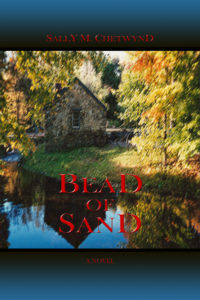Monday, February 20, 2023
To Tease Your Mind
There are stars whose radiance is visible on Earth
though they have long been extinct.
There are people whose brilliance continues to light the world
though they are no longer among the living.
These lights are particularly bright when the night is dark.
They light the way for humankind.
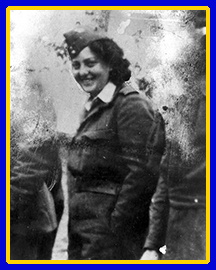 Hannah Senesh
Hannah Senesh
(1921-1944)
poet, playwright, and paratrooper
Born Hannah Szenes in Budapest, Hungary.
A national heroine of Israel for her anti-Nazi work
as a British Special Operations Executive (SOE) during WWII.
At age 23, executed as a spy by a Hungarian firing squad.
Brilliant Flashes
My good friend Paul, a WWII veteran, died a few weeks ago. Not unexpected: next month he would have turned 97. I got to thinking what a shining star he was, and since then I’ve collected other shining stars – physical and metaphorical – that have lit up my life. They all have short lives, even the human ones, compared to eternity.
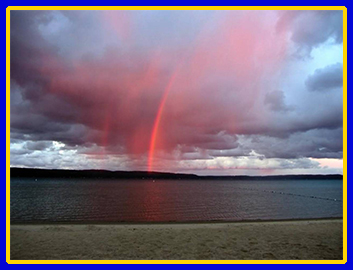
THE RAINBOW
Most rainbows shine with all the colors of the spectrum, but sometimes they have only one, two, or three colors. Even white rainbows (“fog-bows”) occur, when sunlight is caught in tiny fog droplets. Smithsonian Magazine reports that rainbow color, intensity, and even arrangement is determined by the time of day, intensity of the sunlight, the density, size, and shape of water droplets, and whether the moisture is water or ice.
I saw a red one on my way home from work a few years ago. It had been raining, and as I came up off the exit ramp from Route 125 onto Route 28 south, heading into North Reading, Mass., there in the eastern sky was the half-arc of a solid-red rainbow. Stunning!
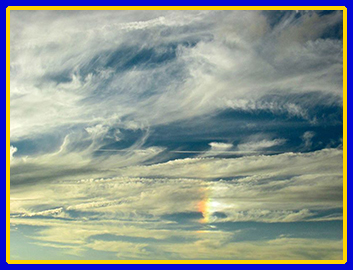
THE SUN DOG
A sun dog (or “sundog”) is an atmospheric event related to the rainbow. Rainbows occur on the opposite side of the sky from the sun, but sun dogs occur near the sun – they “dog” the sun. Ice crystals in high, thin clouds become prisms for the sunlight, looking like miniature suns themselves. Sun dogs usually come in pairs, one to the left and one to the right of the sun. Sometimes rainbow-like segments extend vertically in a short arc. They are intensely brilliant, showing the yellow-orange-red spectrum, sometimes shifting to blue. They are seen most often when the sun is low in the sky. Sun dogs usually mean that inclement weather is on the way, often within 24 hours.
According to Almanac, sun dogs belong to Zeus, the Greek god of the sky, who walked his dogs across the sky. The scientific name – far less charismatic – is parhelion (plural: parhelia), meaning equal to the sun. Sun dogs are also called “false suns.”
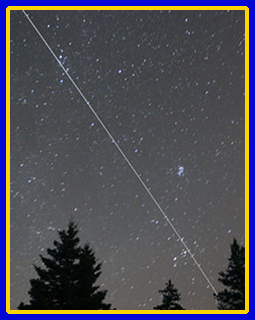
SATELLITES
There’s been quite a furor over manmade objects drifting across our skies lately, but as far as I know, those occupy our atmosphere; they are not in outer space. I’m talking about orbiting satellites that mostly provide telecommunications. As of a year ago, nearly 5,000 satellites orbited the Earth, nearly 3,000 of them belonging to US entities, public and private.
Of course, the International Space Station is up there, too, occupied by a crew from several nations. The ISS is visible to the naked eye for those who view our night skies away from populations subject to “light pollution.” My family has a house on an off-shore island in mid-coast Maine, and the night sky is an endless source of fascination. I have often seen a satellite cruising across the face of the Milky Way. At first, it’s hard to discern that it’s not a star, until I see that it is moving. On following nights, I find it going in the same direction, running parallel but slightly offset from the previous night’s track.
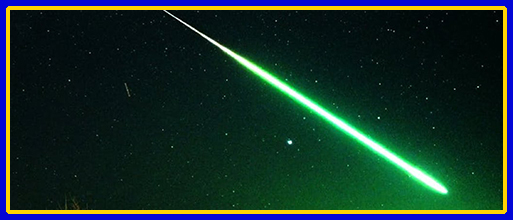
SHOOTING STARS
Several years ago, I was driving home along the straight stretch of I-95 south of Newburyport, having visited with family in York, Maine. (We had gathered to meet my brother’s step-great-granddaughter visiting from the West Coast. Even at age 2, Bijou -a French word for jewel – had charmed me all evening.) As I thought about her, I was startled by a large, bright green streak that dropped across the sky vertically in front of me. It came from overhead, shot toward the horizon, and vanished in the light of greater Boston directly south.
At the time, I had no idea that shooting stars – meteors – came in different colors. We see white ones most often, but colored ones do occur. That’s determined by the elemental material they are made up of. A meteor with a calcium foundation burns purple; magnesium burns green or blue; nitrogen and oxygen burn red; iron burns yellow, and sodium burns orange. The faster the meteor, the more intense the color.
It pleased me to think of Bijou as perhaps heralded by that green meteor, another jewel of the sky.
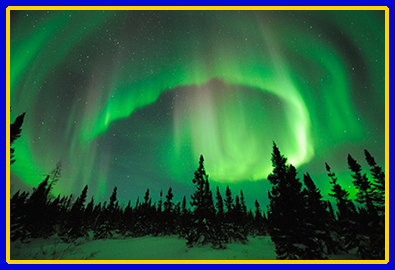
AURORA BOREALIS (Northern Lights)
This atmospheric phenomenon is perhaps the most mysterious. It occurs in both the northern and southern hemispheres (the Southern Lights are called aurora australis) (collectively: aurora polaris – “polar lights”), most often nearer the Earth’s poles than its equator.
An aurora is caused by electrically charged particles that the sun’s corona ejects in a stream into space. The magnetic pull of the Earth draws the particles toward its poles. When the particles enter our atmosphere, the friction of the particles “excites” the atmosphere’s atoms and molecules, making them glow. The atoms’ and molecules’ chemical make-up determines the colors – for example, oxygen makes greens (the most common aurora color), reds, and some yellows. Nitrogen makes blues, purples, some reds, and sometimes pink. The element neon makes orange. The shape of the Earth’s magnetic field at any given time determines the shape of the aurora – curtains, arcs, spirals, shooting balls and streamers, bands, and circles. The particles’ altitude also affects colors and intensity.
When I worked in Down East Maine back in the late 1970s, I once stood for nearly an hour in sub-zero weather on top of a remote hill to watch an aurora borealis. It covered the entire northern half of the night sky. A white “gauze” formed a backdrop, and pink balls at the edge of a green curtain shot streamers up from the horizon. These balls and their streamers marched eastward, and as each faded, another rose at the western end to take its place. It crackled faintly, like the sound of static electricity discharge. Auroras sometimes whistle or hiss, too.
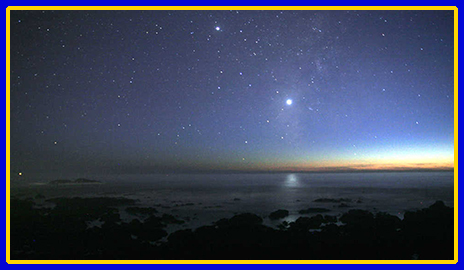
THE PLANET VENUS
When I was a kid, I read in a comic book of natural history about the visibility of the planet Venus. It said that when Venus in its orbit is closest to the Earth, we can see it easily even in broad daylight with the naked eye. This seemed preposterous. Of course, the cartoon rendition showed Venus in a most exaggerated form. I had never seen anything like that in real life, and still haven’t.
But the comic book was telling the truth. Two summers ago, when I was (again) at our island place in Maine, I awoke about 4 am to bright light streaming into the bedroom. I got up and peered out the window. There, in the eastern sky over the sea, hung a huge yellowish light. In disbelief, I put on my glasses. Was this a UFO? Fog had blanketed the island in the night, but this orb burned through that. I watched for several minutes, but its movement wasn’t perceptible. So, it wasn’t a flying saucer. I figured it must be Venus, close enough to be that big and bright. It was in advance of sunrise, typical to its nature. When I mentioned it to my brother in the morning – he has studied the stars and planets more than I – he confirmed that it was Venus. He had noticed it, too, about half an hour after it woke me up. Venus repeated the show early the next morning, too, that time without fog. I was impressed!
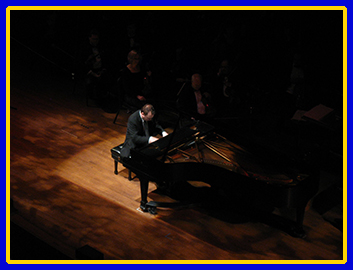
AN OLD PIANIST
My mother and I traveled Down East in July 2016 for a family event. After checking into the hotel, I went for a walk. I neared a large church with music coming through the open windows, so I went in. It was a coffee house, with locals taking turns singing or playing instruments.
A crippled old man rose for his turn. Two other men helped him get to the piano. He settled and began to play. Beautiful chords lifted into the air as his gnarled fingers moved nimbly through several passages. Then they bungled and the euphony was gone. He floundered on the keys. In a moment he found his place, and once again, the dulcet composition filled the room.
The man continued to falter, stop and apologize, find his place again, and coax lovely strains from the piano. Throughout the next fifteen minutes he fought the erratic disconnect, frustrated that his fingers would not do what his brain commanded.
The whole while, the audience remained quiet, patient, and attentive. Several near the front frequently called to him in a tender stage-whisper, “It’s all right, George. Go on. You’re doing fine.”
It was clear that these people knew George well, and knew what he had once been. A professional musician? A maestro? His body, now aged and frail, betrayed him. But these gentle, compassionate souls were willing to ignore his stumbles and fumbles, eager to hear those exquisite fragments, knowing that all too soon he wouldn’t be around to entice even those few gems from the piano, gracing his friends with perfection when he found that sweet spot, giving them glimpses into what once had been.

PAUL WANKOWICZ (March 22, 1926 – January 29, 2023)
And now, a tribute to my dear friend Paul.
I met Paul shortly after my husband Phillip and I married, at a wedding reception, I think. Phillip was friends with Paul’s daughter Bex. Paul and I got to talking and realized we both liked to write. In the late 1980s, we both joined a small local writing group and got to know each other’s work and style.
After Phillip and I moved to Maine in 1996, the two-hour drive didn’t support my attendance. A dozen years later, when we moved back to Massachusetts, Bex reminded me that her father wanted to talk writing with me, now that I was back. So, he and I set up our own little writing group. We met once a month and spent hours reviewing each other’s work, throwing spaghetti ideas against each other’s walls to see what stuck, brainstorming, and sharing life experiences that enriched our writing. All of this over cups of hot, black tea, usually Keemun or Russian Caravan, summer and winter. (Paul had no use for green teas.)
Back in our first writing-group days, I had been working on what eventually became my second published novel – The Sturgeon’s Dance. By the time we renewed our work together, I was in the middle of what became my first published novel – Bead of Sand. I had dubbed around with it for fifteen years. One evening, Paul told me that he had signed a contract with a self-publishing firm, a two-for-one deal. He said, “Dakota Flight (his novel) will be one of those, and your book will be the other one. Otherwise, you’ll never finish it.”
He was right! I didn’t have the money to finance the publication of a photocopied newsletter. This was the impetus I needed to get the deed done. And I did. Bead of Sand came out in 2013. I’ll never forget his generosity.
In February of 2015, Paul’s daughters Bex and Nina uprooted Paul and his wife Sue from their home of 48 years in Winchester, Mass., and moved them into a retirement facility in Portland, OR, where the girls live. Not long afterward, their son Francis moved to Portland, too, from Arizona. Son Nick moved his family into the old homestead. Thus, our meetings ended; I continue to miss them.
Since then, Paul and Sue graduated to assisted living, then more recently to memory care. No matter his condition, Paul continually enjoyed reading and cheerfully welcomed all visitors, whether or not he remembered who they were. And on January 29, 2023, seven weeks shy of his 97th birthday, Paul left this world peacefully and painlessly, with Sue, Bex, Nina, and Francis by his side.
Paul was perhaps the most unusual person I’ve ever known. He was open to any and all experiences, and his life was a treasure trove of unique experiences. Born in Poland into minor nobility, he came to the States with his family when he was nine. He learned English from comic books belonging to a boy who lived in a neighboring apartment. During WWII, he served in both the Polish Air Force and the Royal Canadian Air Force. After the war, he completed his studies at Yale, graduating with a BA in English Literature. He became an engineer in multiple fields and ended up tracking satellites for the Smithsonian Institution in Shiraz, Iran, and in Antarctica. Later, the State Department sent him as a civilian advisor to a small province in Viet Nam during that conflict. He retired in 2014 from professional work after many years in Mass General Hospital’s research and development department; his last project was the invention of a mouse-resuscitating device.
Some time into all this experience, he began writing of his adventures. He said, “Who wants to listen to an old man babble on about his war stories?” [Me, for one!] So he transformed them into fiction. Besides professional reports, he published two novels – The Ulysses Flight (2010) and Dakota Flight (2014). At least six more novels lie in manuscript form, in varying degrees of completion, as well as short stories and essays.
Bex often thanked me for humoring her father, for my regular attention to him. Bother! I wasn’t humoring him! He was a mentor and a compassionate model of how to live life well. He taught me immeasurable lessons about writing, human nature, and who knows what else. I was privileged that he called me “friend.”
Stars do die, but as Hannah Senesh points out, it can take millennia for the light they cast to burn out. And does the light itself ever die? Paul was – and still is – perhaps the most brilliant star in my life’s constellation.
Conversations
Do you have comments or questions about this post?
I’d love to hear them. Let’s talk!
Happy reading! Happy writing!
Sources
Image: Hannah Senesh (Hannah Szenes)
http://thefemalesoldier.com/blog/hannah-szenes
Image: red rainbow
https://fountainmagazine.com/2019/issue-127-jan-feb-2019/beyond-the-rainbow
Image: sun dog
Photo by Kate Sheely, August 7, 2014
Image: ISS (International Space Station) time-lapse photo
https://skyandtelescope.org/observing/watch-international-space-station/
Image: green meteor
https://www.sciencealert.com/bright-green-meteors-seem-to-be-raining-down-on-new-zealand-but-why
Image: aurora
https://www.the-sun.com/news/6957900/inside-remote-town-northern-lights/
Image: Venus
https://www.calacademy.org/explore-science/can-you-see-venus-in-the-daytime
Image: Paul Wankowicz with airplane
Photo by Francis Wankowicz, c.2012



